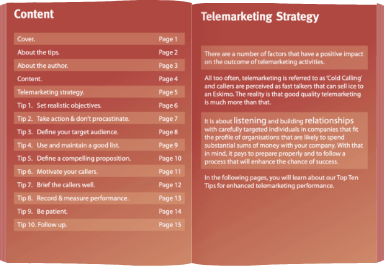Wouldn’t it be wonderful if customers came, ready to buy? In some cases, that’s very much the case. If they’ve ordered from you before and this is a repeat order for the same product or service, maybe that’s exactly what happens. Equally, if you’ve got a product that is a must buy or distress purchase then perhaps working out how to close more sales is as easy as shelling peas. But, that’s probably not reality for most sales transactions.
Often, the focus is therefore put on closing more of those that cross your path. That’s logical. But, too frequently, the emphasis is on the end of the process rather than the start and middle. Closing more frequently isn’t just about killer sales patter. It isn’t just about getting that last question right so that they sign on the dotted line. The close starts at the beginning and goes all the way through the buying-selling- process.
In most buyer-seller interactions, when b2b purchases are concerned, the buyer has done some kind of due diligence. They’ve checked out the various ways to satisfy their need or solve their particular problem. They’ve Googled. They’ve asked colleagues, friend and acquaintances for recommendations. They might have checked industry sources. And, perhaps they’ve posted on a social platform asking for help or suggestions. If they’re really doing their homework, they may have looked at your and your competitors’ websites and broader online presence to whittle down prospective suppliers onto a shortlist.
The fact is that where decisions have a significant impact on the organisation, the decision may not be quick. It may involve several stakeholders. It may require new budget and/or budget approval from higher up. There may be a number of hoops to go through before a lucrative contract is signed and the purchase order is raised. So, closing isn’t as simple as finding the right words to say in that one critical moment when the timing is crucial. We’re not talking about using used car salesman tactics here. Of course, you do need to know how to ask for the business. A sales person won’t get far if they’re all chat and no results. However, in this blog, we look at 10 essential ways to close more sales.
Establishing trust & credibility
It’s pretty unlikely that the customer will take a leap of faith with a new supplier if there’s an absence of trust. Therefore, you need to build credibility throughout the buying process. Part of the answer to this comes from the first direct interaction with a sales professional. If any sort of online evaluation is part of the exercise, credibility comes from a look at your website and possibly at your LinkedIn profile and your other social presence. If what you’re offering to market is visual, you need strong imagery and video on your site and also on other social platforms where this is the norm such as Pinterest, YouTube or Instagram. This is part of the filtering process.
If you have great testimonials and case studies on your website, this helps enormously to at least get you onto a shortlist of perhaps three or four companies to compete for the business.
If you have lots of content on your website, that helps too. And, that doesn’t mean just product or service info. The more you produce in terms of knowledge pieces that showcase your expertise the better.
Building Rapport from the first touch point
Once a prospective customer has made the decision to contact you, this is where the skill of the salesperson kicks in. But, don’t forget that it’s about every interaction and every touch point with the customer. It may well be that the customer needs to speak to someone in the organisation in advance of speaking to the actual sales person. How well versed is that person? How able are they in the art of questioning (see below) and qualification? People still buy people and, assuming that the customer has made their initial list of potential providers before speaking to someone, the first conversation is vital. And, that includes whoever represents your business when you first pick up the phone.
Throughout the sales process, those representing the organisation must know how to build rapport. It’s isn’t about talking. It’s more about listening and asking good questions that enable you to gather the necessary information that is essential to properly scoping the solution.
Listening and questioning
No-one likes a talkaholic. Whilst you might just about admire their enthusiasm, the customer doesn’t care about what you do or what you know. The customer wants to know that you care about them and their needs and they what to know how what you know relates to their problem or opportunity. Therefore, an essential part of closing is knowing when to shut up, how to ask good questions and only then suggesting good options.
Questioning is so powerful. If you combine this with a non-pushy approach, it has the potential to win you more business. You should ask good questions throughout discussions with prospects. And, that’s a blend of open and closed questions. That’s especially the case the more objections you receive during the buying discussion. The best way to handle objections is to ask probing questions.
Once you’ve established initial rapport, you can intersperse your questions with quite targeted questions. For example, is there anything that is going to prevent you…..? Is there anything I haven’t covered that would stop you……? ‘Given what you told me earlier about how important this is to you, what is it that’s worrying you about moving forward?’
The more you can diagnose, the closer you will be to knowing how to sell and to creating a status where you’re perceived as a trusted advisers as opposed to a typical sales person
Understand the psychology
It is not what customers buy as opposed to why they buy that is important. If you tap into the issues that surround the purchase and connect with those, you’ll be much more likely to convert a sale. Those sellers that like to focus on themselves, their products and what they ‘think’ the buyer wants to hear, will be less successful than those that work out the real triggers. Whilst it’s important not to overcomplicate, once again, this comes down to listening and asking good questions then working hard to relate what you say to what you have learned. The sales close becomes much easier when you do it this way.
Consider timing and urgency
If a customer comes to you, it is more likely that they will be in the buying cycle. That’s obvious. However, many sales interactions are enquiries from potential buyers that are passive rather than active. They may be interested but possibly not immediately. That could be at an event, as a result of a telemarketing call or through an introduction or some other route. Sometimes, the individual in the organisation with whom you’re engaging has purely been tasked with fact-finding.
However, assuming that they do have a role to play in the final decision, you have to work out what’s going to move them off the fence and towards your solution. Pain is a good motivator. If you can identify what challenges they have and amplify that feeling of dissatisfaction or discomfort during the conversation, you have a better chance of getting them to take action.
A good pipeline is a precursor to more sales
The reality is that budget, timing and urgency play a significant role in driving decision making and, you won’t win them all. This is where building your sales pipeline becomes ever more important. Identifying those that are in the market NOW becomes more viable when your sales pipeline is large enough to account for those that aren’t ready and those almost inevitable procrastinators who will never convert. Ultimately, everyone buys. They may just not buy from you or they may select a different approach to the problem. If you have a pipeline of timely follow ups in your calendar. You’re more likely to identify those that are in the market at the right time. And, ultimately, you’ll close more business.
Understand customer inertia
Having a good understanding of alternative solutions plays an important role in helping the customer to come to a more swift decision. Some customers cover what you aspire to do for them in-house. Others are not particularly dissatisfied with current providers even if their solution (or how they currently handle things in-house) doesn’t measure up to what you offer.
Therefore, you really need to think about what might prevent prospective customers from buying from you now. In some cases, you may just need to park things and remain in contact until they are ready to move forward. Otherwise, you can risk alienating the customer by shaking the tree too hard. If you get int a conversation with a new prospect, as opposed to being shut down quickly, it pays to explore the challenges that they have that are not perhaps alleviated by doing what they’re currently doing. Challenging them in terms of what stops them may bear fruit but be careful not to sacrifice future opportunities by being over-pushy.
Identify the decision maker(s)
Certainly with higher values of sale, it’s a process that can sometimes be elongated. Gestation periods can run into months and even years. In certain cases, you may need to identify a project sponsor or champion within the organisation. There may be several stakeholders. There’s no single answer to these problems. If you can get into a room with the person that signs off on spending, that’s great. However, that isn’t always possible, especially early on in the process. Ask the question who is responsible and try to involve them. The higher the spend and the further away you are from the decision maker, the less likely you will be to close the business. At the same time, the lower the spend, the lower down the organisation decision making will go. So, you need to work out who to target and who can lead you to your target.
Understand risk and reward
Any change is risky. It might go wrong. And who’s going to take the fall if it does? Business managers also have competing priorities. So, making the decision that impacts your sales figures may be low on their agenda. It’ll almost certainly be lower than on yours. So, with that in mind, what can you do to influence the outcome? Can you encourage them to move forward faster? Without giving away too much and damaging your brand and credibility, can you offer any incentives for them to act now?
Hone your sales skills
Not much will happen if your sales people aren’t motivated to sell. Energy and enthusiasm are infectious. Your sales representatives need to believe in what they are selling whether that’s face to face or on the telephone. The right attitude will carry you further than a boatload of product knowledge.
Not everyone is a born salesman. And, not all sales skills are innate or intuitive. Some individuals involved in the sales process may need a refresher for training on telemarketing techniques and/or other skills.
With the right approach as a platform, the better informed the salesperson is, the more likely they will be to appear credible. And, they will be able to talk more convincingly the more they understand the marketplace, the issues customers face, the competitive set and the solutions.
Ultimately, working out how to close more sales isn’t about that one critical moment in a conversation where everything hangs on the right choice of words. It’s a series of actions that culminate in a positive outcome.
GSA helps businesses, large and small, become more effective in their marketing and business development. We run outbound telemarketing campaigns into the UK, Europe and further afield. Also, with our experience, we provide telemarketing training to help sales teams improve their results. If you’d like to know more, give us a call.






